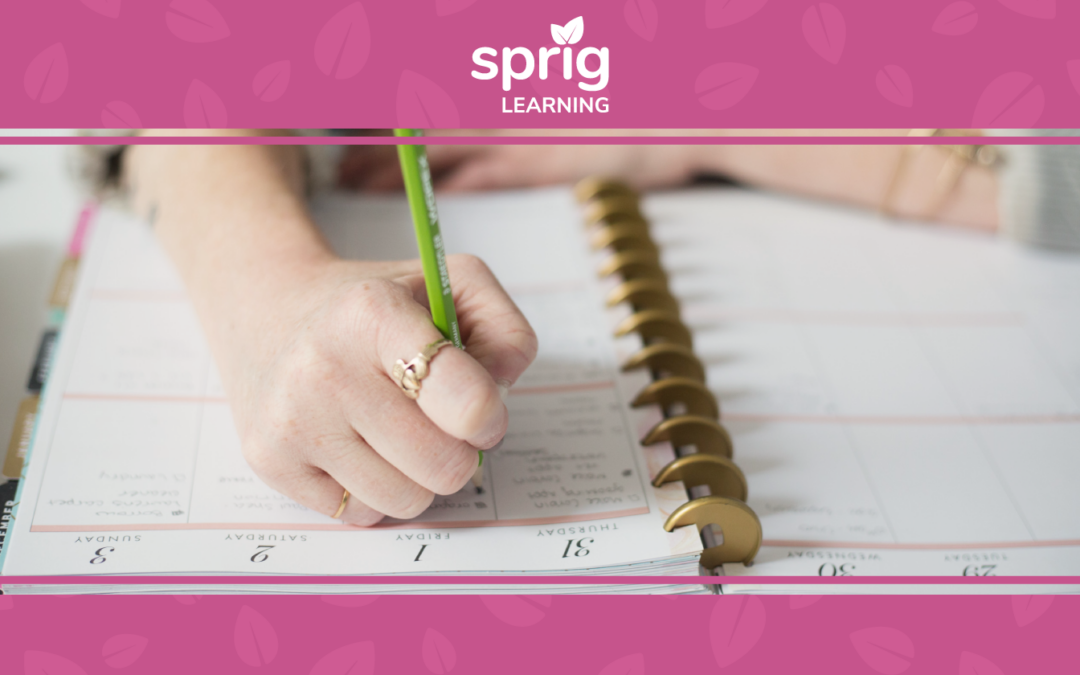Education administrators face multiple considerations when strategizing and planning for the school year.
They must balance operational needs, such as personnel and infrastructure maintenance, with innovations aimed at enhancing student outcomes and engaging the broader learning community.
These improvements not only save costs but also elevate the quality of education. Amidst all these priorities, one group stands out as the driving force behind our education system.
Teachers.
Despite the many challenges and obstacles facing teachers, they remain eager for ongoing improvements that can address the growing challenges facing students, families, and schools. Equipping them with the right tools is crucial in this regard.
When combined with necessary professional development (PD), teachers gain the capacity to effectively manage their classrooms. It is essential to leverage the experience and knowledge of educators to ensure that new solutions align with established classroom routines.
Sprig Reading exemplifies such a solution, developed in partnership with educators to provide flexibility and seamlessly integrate into any daily schedule.
In this article, we delve into the essentials of an early childhood teacher’s schedule, enabling educators to deliver the highest quality education within their available time at school.
Daily Teacher Schedule

Primary Sources surveyed over 10,000 teachers and determined they worked an average of 10 hours and 40 minutes a day.
How teachers spend this time differs from person to person. The amount of variation between teachers that exists in how they set their schedules is truly mind-boggling, and an indication of the incredible innovation and creativity of teachers!
However, setting a schedule (whatever it may be) is extremely important for teachers, administrators, and most importantly the students.
There are common themes that we see in all schedules. These are covered in the following sections.
But first a foreword of what a teacher schedule is not.
A Teacher Planner is Not a Schedule
A teacher planner is a resource that contains many things that help teachers plan their day.
A teacher planner contains things like student birthdays, notes of interactions with each student, parent contact information, etc. In addition to all these things, the planner may also contain a schedule. However, it is not a schedule.
The teacher planner is an amazing resource! It has been heavily commoditized (and for good reason) as it’s so popular amongst early grade teachers to keep track of all lessons, grades, and meetings.
A schedule is not something that can be commoditized. They are often perfected over time through the knowledge, experience and loving effort from educators.
The following themes are common in teacher-made schedules. These are the essentials.
Common Themes in Teacher Schedules
Pacing is very important when teachers instruct their class of diverse early learners. Energy is needed to keep everyone active and engaged, but too much of it can exhaust students as well.
The following themes thus correspond to the state of energy that both educators and students have throughout the school day.
Preparation/Morning Circle (Rise)

The first period of any schedule is so important as it provides that predictability and transition for young children.
Preparation is the first thing on many of the kindergarten and elementary teachers’s schedules.
Some type of morning group activity such as circle time is usually bundled in during this phase.
This phase of the schedule serves four purposes.
1. It allows the educator and students to discuss all the formalities (if any) the school requires. It could be reciting a mission statement, singing the anthem, etc.
2. It allows the educator to greet every child, and allows students to settle in and unpack their school bags.
3. Some type of group activity is often done here to start off the day, such as singing songs in a circle, reading with a partner, exchanging smiles with each other, picking lunch options, etc.
4. Lastly, it allows the educator to outline the day ahead together with the students.
As mentioned before, it’s important to get new students accustomed to the different lessons throughout the day.
With Sprig Reading, an educator is able to take a quick glance at their student dashboard to identify what skills and activities they should focus on for the day and week.
This is individualized learning, in the truest sense of the word, that is learning customized for one student.
Differentiated instruction is the process of tailoring instruction to meet the individual needs, strengths and interests of students.
How to Plan Differentiated Reading Instruction
In many schools, there are specific blocks set for interventions, or a set time to deliver effective additional support to students struggling in certain areas of learning.
Certain time periods can be set aside to administer such interventions, or they may be also incorporated within flexible teacher routines, that have in-built capacity to add such blocks as per need. Such intervention blocks can also be tiered, based on the level of additional support that is needed.
Regardless of how and when differentiated reading instruction is scheduled, it is crucial to have an assessment, monitoring and instruction strategy in place which facilitates such intervention sessions.
With Sprig Reading, students’ level of understanding and progress on all important literacy concepts can be quickly documented at any given time by use of circle charts.
Such ongoing and frequent assessments provide teachers with a record of what skills students have mastered and the skills that students need more practice or explicit support.
These assessments and benchmarks should be aligned with grade-level expectations and address individual areas of improvement.
Sprig Reading is very intuitive to the teaching experience because it provides a framework for all of the foundational reading skills which need to be monitored and tracked in order to achieve reading mastery.
There is support on how to instruct and assess each of the foundational skill sets, which helps teachers to plan instruction for each student.
Block Schedule (Sustain Energy)

Block scheduling is a very popular teaching strategy adopted by early learning educators.
The actual lessons are administered in blocks of time, designated to teach a certain topic.
It’s a time to focus on particular subjects, such as reading, writing, math and science.
These blocks contain direct instruction, games, hands-on activities, mini-lessons, workshops, etc!
The number of ideas for activities are endless, but it’s important that these learning activities teach the skills and outcomes identified in the curriculum or standards.
This is the challenging part where additional support can be useful for educators.
Sprig Learning’s early literacy and numeracy programs contain hundreds of learning activities that map to specific curricular outcomes. These include individual, group and whole class activities.
Literacy blocks are the most common and usually take the largest chunk of time out of all the learning blocks. It is recommended that the 5 fundamental early literacy components are covered.
When educators set up learning centers and rotate groups of students, there are certain activities that are more suitable for this purpose. The learning materials from the Sprig Store help provide classroom resources to compliment and drive instruction for these learning centers.
How to Plan for Playful Reading Instruction
In some teacher schedules, there is the concept of free play and exploration, which uses unstructured playtime where students can engage in imaginative play and develop social skills through peer interactions.
But as play is so important in early learning, it can also be incorporated in a learning center, where foundational reading skills are taught in the most fun and joyful way, where all of the senses are engaged by setting up the right environment with the right learning materials.
When teachers actively participate in these playful interactions, they are able to teach essential learning concepts to their class more efficiently.
Of course, adjustments need to be made, to reflect changing learning needs, to meet new learning objectives for groups of students or individuals, and also to keep things fresh that inspire continued motivation to achieve all the required learning outcomes.
Going Home/Dismissal (Unwind)

Learning truly never stops in the early years.
It happens both inside and outside the classroom, at the home, and in the larger community.
Armed with the holistic insights, educators are in a better position to understand what the learning environment for f the student looks like outside the classroom.
With Sprig Learning programs, parents and other caregivers contribute to this understanding by completing surveys about the opportunities for learning at home.
If teachers want to reflect what was learned during the day, there are activities in Sprig Reading that allow them to do so with their students.
Teachers provide parents with simple, everyday learning activities that are designed specifically for their child. Parents are able to better support their child at home, working on areas that complement the curriculum taught in school.
Keeping it Simple. Doing the Essentials Right.

Creating and refining an early childhood teacher schedule is a significant task, requiring careful thought and adjustments along the way.
Instead of discarding a well-crafted schedule, it is better to provide teachers with the necessary tools and resources to support their vision and make their job easier.
Think of it as painting a wall.
From deciding to paint, to finishing painting a wall, it is a process.
If you have done this sort of thing before, you know you will have to select the right type of paint, ensure you have the right tools such as a brush, and make sure the coating dries after the job is done.
There is no need to reinvent the process. Experience is sufficient in ensuring that it gets done.
But at each step, it’s okay to use aids that make the job easier.
That is, using a colour visualizer to make the choice of paint, a roller brush to apply more consistent strokes, or a dehumidifier to dry the paint faster.
Sprig Learning is here to help educators every step of the way, whether it is creating a schedule, implementing a schedule, or perfecting a schedule. Get in touch with us to learn more.

